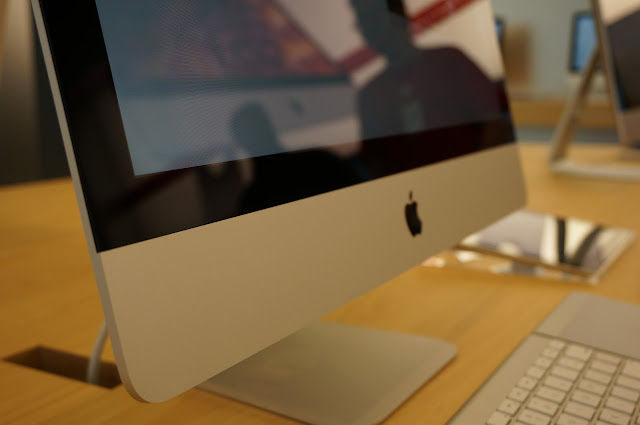Speeding Up Your iMac
The iMac took technology out of the beige plastic box it was trapped in and changed the entire industry. It showed that devices can be aesthetically pleasing, more simple and less intimidating. iMacs made the computer a companion instead of just a tool, and I often hear Mac users talk about their Macs as if they are talking about an old friend.
The first iMac shipped with a 4 gigabyte hard drive and 32 megabytes of memory, which could be upgraded to 128. The current iMac pro can be configured with an 8 terabyte solid state drive and 128 gigabytes of memory. To put this into perspective, you’d need 2000 original iMacs to match the storage of one current iMac, and 1000 to match the memory.
From the original fruit color inspired ones, through the daisy inspired ones, and then the white ones, and then sleek silver machined metal ones, to the current original iMac color inspired ones, the iMac is the best workstation ever made. It saved the company that created it, a California company that went on to become the richest company in history, and spawned a revolution in design.
Apple is set to take over the top slot in desktop computer sales on the back of the iMac, which means that there are lots of new ones out there these days. But these workhorses seem to run forever, so in fact there are still millions of older ones in use. And the ones that have hard drives in them can see a substantial boost in performance from an upgrade to a solid state drive.
But cracking open and working on the cramped components inside an iMac are not everyone’s cup of tea. Of course you could send or drag yours down to a computer repair shop, if you’ve got the time, energy and money for that. Or you can go with an external solid state drive instead, and save all three. In addition to that, the current internal hard drive is an excellent location for your backup. I’ll explain below how you can do this yourself, or have a professional do it for you at a very reasonable cost.
Read on, and if the upgrade sounds like something you want, but you don’t want the hassle of what goes into setting it all up, you can instead opt to have professionals take care of it all for you. The technicians at Benchmark Service's Mactomo Team can do this all, remotely, and at a very reasonable price.
You see, your iMac now boots to the macOS which is installed on a hard drive inside the machine. But your iMac can just as easily boot to a macOS that has been installed onto a solid state drive that is connected to it via a USB or other port. And since solid state drives are twenty times faster than hard drives, the result is a faster machine, and a more productive and enjoyable experience with your iMac.
The first step is to research which type of solid state drive meets your needs and is appropriate for your iMac model. You’ll have to consider how many gigabytes or terabytes of storage is needed and how much you want to spend. The more storage “bytes” the higher the cost. Then you'll have to consider the physical size of the drive and where it will be when you use your iMac. The drive will need to be connected any time you are using the machine. There are a lot of drive manufacturers out there, offering a plethora of choices that vary in cost, quality and design.
After you’ve chosen and purchased your new external solid state drive, it’s time to configure it and install macOS onto it, so that you can boot your iMac to it. Before doing any of the following, be sure you have a current backup of your iMac. After confirming that, download the latest operating system that is compatible with your iMac model.
Then connect the solid state drive and use Disk Utility to configure it so it’s ready for the OS. Once that is completed, install the OS onto it as you would any installation. When the installation is completed you’ll be prompted to create a new user account or migrate one from the internal hard drive disk, or a backup source. Choose which you would like to use, and create the account. Be sure to go into System Preferences and configure the iMac to boot to the external drive and not the internal one.
After you’re sure all your data has been transferred and the new disk and OS are running well, you have the option, if you like, of using Disk Utility to reformat your internal drive and configuring it as a backup destination. Then use Time Machine to create a new backup of your new external drive onto the internal hard disk. Enjoy your old iMac with it’s new boost in performance and speed.
By Duane Cavalier



This method was a life saver for our company - we configured close to 20 SSDs for our older iMacs and the difference was immediately noticeable. From the SSDs, the iMacs are now operating very quickly, and this has saved a lot of time and money.
ReplyDeleteDuane has been helping us with IT support for years. We should've consulted with him before we purchased the iMacs we did. We thought, well they are brand new and it's 2019 they should be good enough for basic internet usage. Wrong.
ReplyDeleteDuane proposed a very cost effective and simple implementation with the SSDs for our iMacs and it has been a huge game changer.
Highly recommend Duane's idea and all of his services!